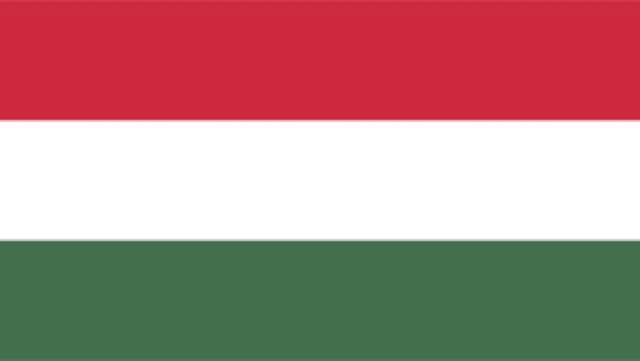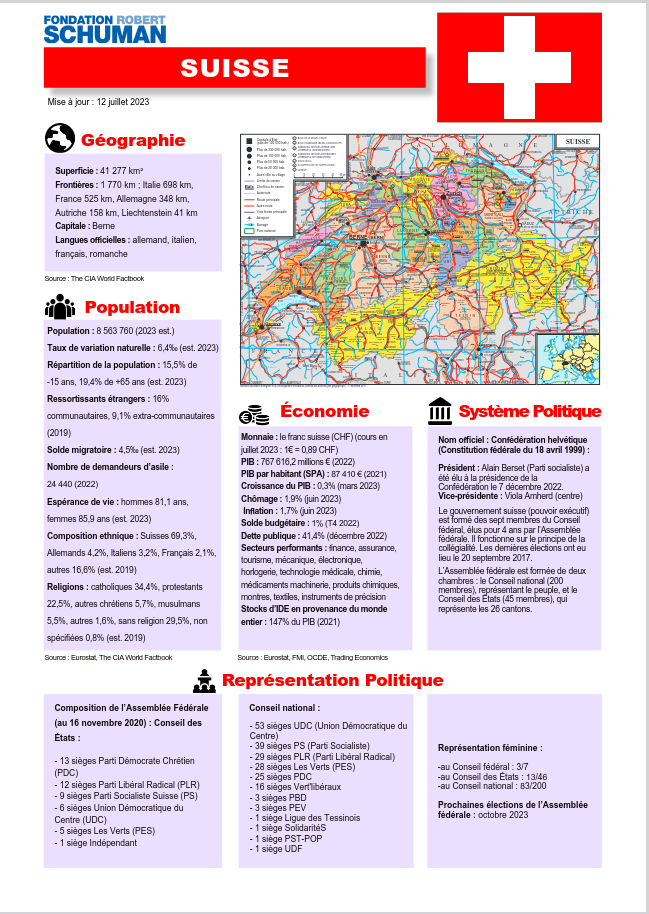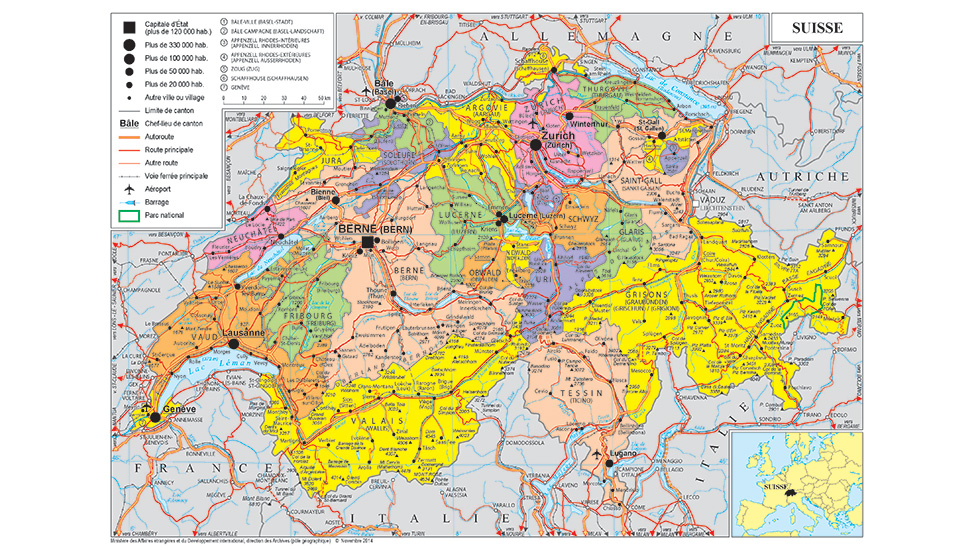
Geography
Area : 41,277 km²
Borders : 1,852 km (Austria 164 km, France 573 km, Italy 740 km, Liechtenstein 41 km, Germany 334 km)
Coastline : 197 km
Capital : Bern
Official language : German (or Swiss German), Italian, French, Romansh
Source : The CIA World Factbook
Flag
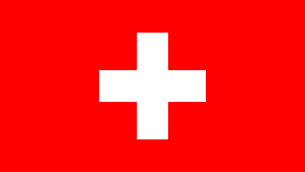
Population
Population : 9,063,764 (February 2025)
Crude natural change rate : 0.9‰ (2023 est.)
Population repartition: 15.1% under 15 years old, 20.3% over 65 years old (2024 est.)
Foreign residents: EU nationals 16% , non EU nationals 9% (2021)
Crude net migration rate: 5.9‰ (2024 est.)
First time asylum applicants: 30,110 (2023)
Life expectancy: men 82 years, women 85.8 years (2024 est.)
Religions: Roman Catholic 30.7%, Protestant 29.5%, other Christians 5.8%, Muslims 6%, others 1.3%, none 35.6% (2023)
Ethnic groups: Swiss 69.2%, German 4.2%, Italian 3.2%, Portuguese 2.5%, French 2.1%, Kosovan 1.1%, Turkish 1%, others 16.7% (2020 est.)
Source : Eurostat, Federal Statistical Office, The CIA World Factbook
Economy
Currency: Swiss Franc (CHF) (exchange rate in June 2025 € 1 = 0.94 CHF)
GDP: € 865,619.7 million (2024)
GDP per capita (PPS): € 80,080 million (2024)
GDP growth : 1.3% (2024)
Inflation: -0.1% (May 2025)
Public debt: 37.9% of GDP (December 2024)
Unemployment: 2.8% (May 2025)
Performance sectors: finance, insurance, tourism, mechanics, electronics, clock-making, medical technology, fine chemistry, drugs, machinery, chemicals, watches, textiles, precision instruments
Budget balance: +0.4% of GDP (December 2024)
Source : Eurostat, OCDE, Trading Economics, Federal Statistical Office, Federal Department of Finance, SECO
Political system
Confederation (Federal Constitution of 18th April 1999)
President: Karin Keller-Sutter (Liberal Radical Party) was elected President of the Confederation on 11th December 2024 and took office on 1st January 2025.
Vice-President: Guy Parmelin (UDC)
Executive power is held by the Federal Council, which comprises seven members elected for four years by the Federal Assembly. The principle of collegiality prevails in the Federal Council. The most recent elections were held on 13th December 2023.
The Federal Assembly comprises two houses: the National Council (200 members), representing the people and the Council of States (45 members), representing the 26 cantons.
Political representation
Political Representation Composition of the Federal Assembly (in February 2025): Council of States
- 15 seats Centre Group (Le Centre party and the Swiss Evangelical Party, EPV)
- 11 seats PLR (Liberal Radical Party, centre-right)
- 8 seats PS (Swiss Socialist Party)
- 7 seats UDC (Democratic Union of the Center, conservative party)
- 3 seats PES (The Greens)
- 1 seat PVL (Green Liberal Party)
National Council:
- 67 seats UDC Group: 62 seats UDC, 2 seats UDF (Federal Democratic Union, Christian right), 2 seats MCG (Geneva Citizens' Movement, regionalist and populist party) and 1 seat Ticino League (regionalist and national-conservative party)
- 41 seats PS
- 31 seats Centre-PEV Group: 29 seats Le Centre, 2 seats PEV
- 27 seats PLR
- 23 seats PES
- 11 seats PVL
Women's representations
- In the Federal Council: 3/7
- In the Council of States: 16/45
- In the National Council: 77/200
Next Elections:
On The Same Theme
Country Sheet
Country Sheet
Country Sheet
Country Sheet
Country Sheet
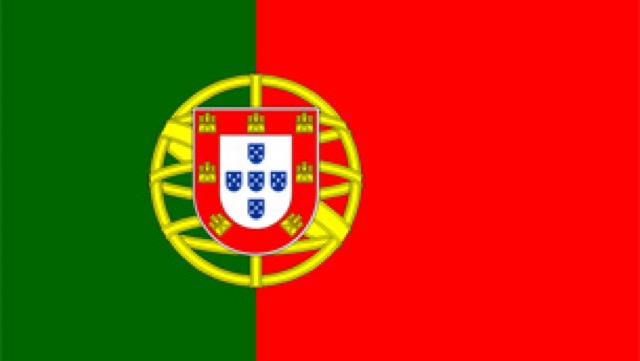
Country Sheet
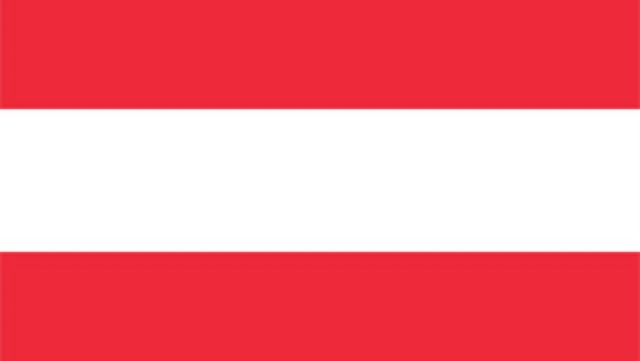
Country Sheet

Country Sheet
